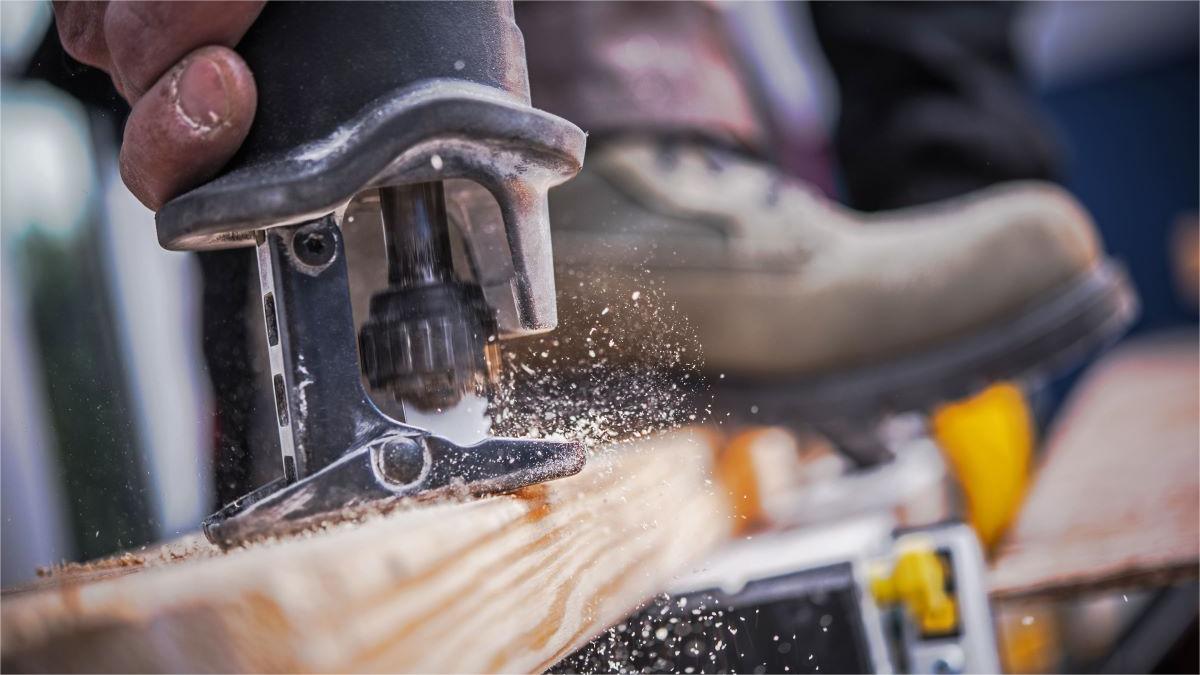
In the realm of power tools, few are as versatile and efficient as the reciprocating saw. Whether you're a seasoned professional or a DIY enthusiast, understanding the ins and outs of this powerful tool can significantly impact your projects. In this comprehensive guide, we'll delve into the history, types, applications, and essential tips for using a reciprocating saw.
History of the Reciprocating Saw
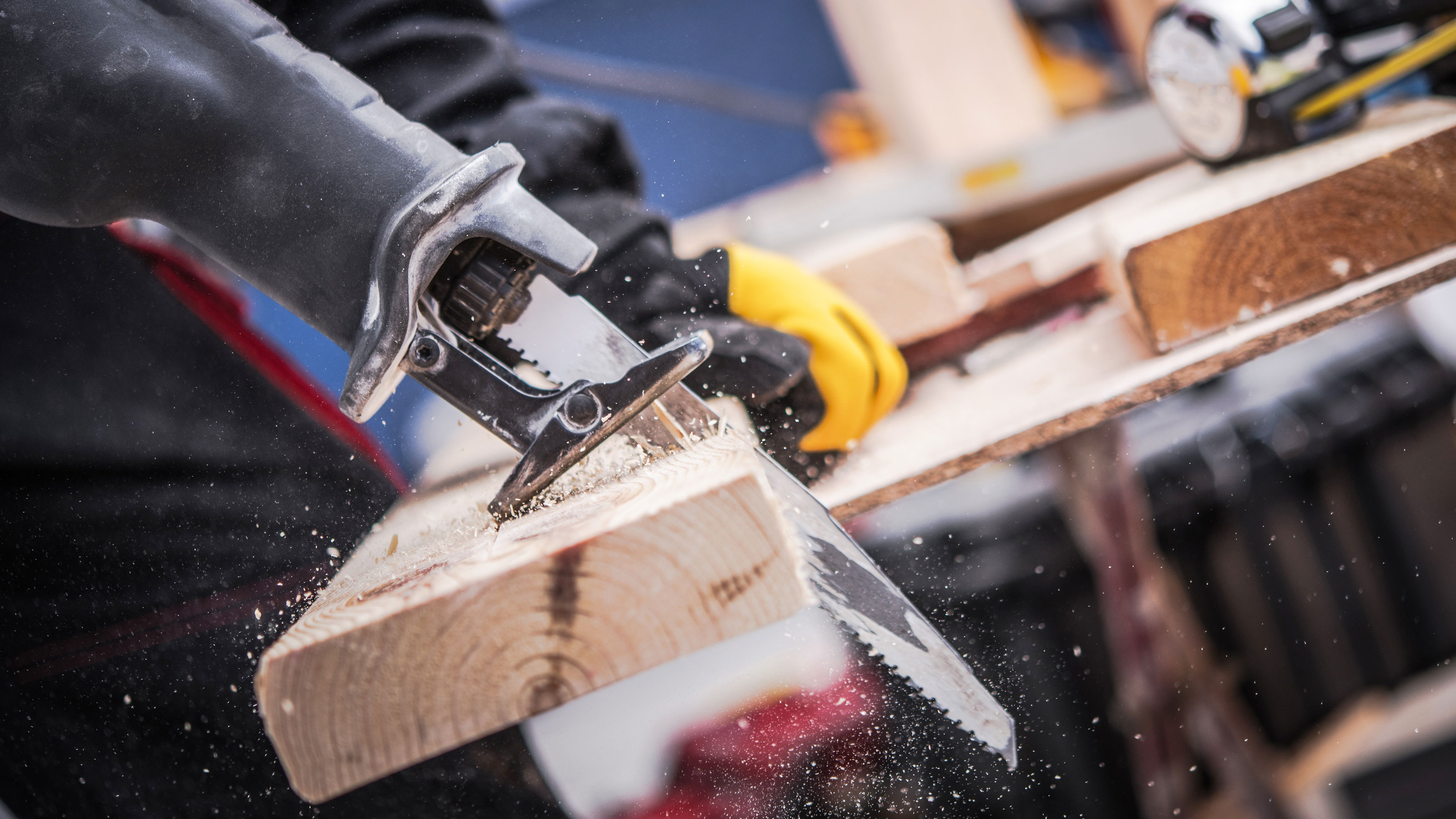
In the realm of power tools, the reciprocating saw stands tall as a versatile and indispensable companion for DIY enthusiasts and professionals alike. Delving into the annals of its development reveals a fascinating journey that has shaped the tool we know today.
Early Beginnings: The Birth of a Tool
The inception of the reciprocating saw can be traced back to [relevant time period], where innovative minds in the tool industry sought a solution for efficient cutting in various materials. This era marked the birth of a tool that would revolutionize construction and woodworking.
Pioneering Innovations: Advancements in Design
As demand for more powerful and precise cutting tools grew, so did the reciprocating saw's evolution. Engineers and designers tirelessly worked on refining its structure, introducing pivotal features that enhanced performance. The incorporation of [specific technology or feature] marked a turning point, setting the stage for the modern reciprocating saw we know today.
Industrial Impact: From Construction Sites to Workshops
The reciprocating saw swiftly found its place on construction sites and workshops globally. Its ability to cut through a variety of materials, from wood to metal, made it an indispensable tool for professionals in diverse industries. Its widespread adoption was not only a testament to its efficiency but also a reflection of its adaptability to different tasks.
Noteworthy Models: Icons in the Reciprocating Saw Legacy
Model X: Redefining Precision
One of the noteworthy models that left an indelible mark on the reciprocating saw's legacy is Model X. With its [highlighted features], it set a new standard for precision and durability, gaining acclaim among professionals and enthusiasts alike.
Model Y: The Game-Changer
Another milestone in the reciprocating saw's history was the introduction of Model Y. Boasting [key characteristics], it became a game-changer in the industry, further solidifying the tool's reputation for efficiency and innovation.
The Present Landscape: Reciprocating Saws in the 21st Century
In the current era, reciprocating saws have reached unparalleled heights in terms of technological advancements and ergonomic design. With features like [modern features], they continue to be an essential tool in the arsenal of craftsmen and construction professionals.
A Cutting-Edge Legacy
The history of the reciprocating saw is a narrative of innovation, adaptability, and precision. From its humble beginnings to the cutting-edge models of today, this tool has carved its place in the hands of those who shape the world around us.
As we reflect on its evolution, one can't help but appreciate the journey that has led to the reciprocating saw becoming an icon in the world of power tools. Whether you're a seasoned professional or a DIY enthusiast, the reciprocating saw's history is a testament to human ingenuity and the pursuit of excellence in craftsmanship.
Types of Reciprocating Saws
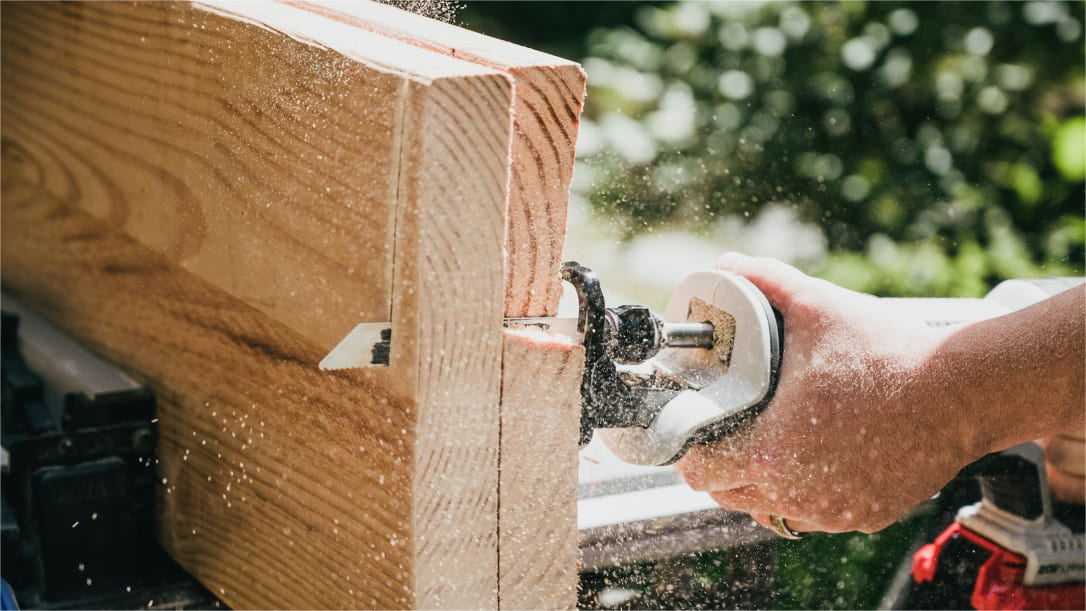
When it comes to versatile and powerful cutting tools, reciprocating saws take center stage. These handy devices come in various types, each designed to cater to specific needs and tasks.
Corded Reciprocating Saws
Power Unleashed:
Corded reciprocating saws are known for their relentless power. Plugged into a power source, they deliver consistent and high-performance cutting. Ideal for extended use on construction sites or workshops, these saws ensure you never run out of juice mid-task.
Pros:
- Continuous power supply.
- Suitable for heavy-duty cutting tasks.
- Ideal for professional use.
Cons:
- Limited mobility due to the cord.
Cordless Reciprocating Saws
Freedom to Roam:
Cordless reciprocating saws offer unparalleled freedom of movement. Powered by rechargeable batteries, these saws are perfect for tasks in tight spaces or locations without easy access to power outlets. They combine portability with efficiency.
Pros:
- Maximum mobility and flexibility.
- Convenient for outdoor or remote tasks.
- No restrictive power cords.
Cons:
- Limited run time; requires battery recharge.
Compact Reciprocating Saws
Small Size, Big Impact:
Compact reciprocating saws are designed for maneuverability in tight spaces. Their smaller size and lightweight build make them a favorite among DIY enthusiasts tackling home improvement projects. Despite their size, they pack a punch when it comes to performance.
Pros:
- Easy to handle and maneuver.
- Ideal for precision cutting.
- Perfect for overhead or vertical cuts.
Cons:
- May have limitations on cutting capacity.
Orbital Reciprocating Saws
Circular Motion Mastery:
Orbital reciprocating saws add a unique twist to cutting with their orbital action. This feature allows the blade to move in a circular motion, making them exceptionally efficient in tearing through material. Ideal for tasks where speed and efficiency are paramount.
Pros:
- Faster cutting in various materials.
- Reduced vibration.
- Efficient material removal.
Cons:
- May produce a rougher finish compared to other types.
Pneumatic Reciprocating Saws
Air-Powered Precision:
Pneumatic reciprocating saws harness the power of compressed air for cutting tasks. Commonly used in industrial settings, these saws offer precise control and are favored for applications where electricity is not the preferred power source.
Pros:
- Lightweight and easy to handle.
- Suitable for explosive environments.
- Consistent power output.
Cons:
- Requires access to compressed air.
Whether you're a professional carpenter, a dedicated DIYer, or someone in between, there's a reciprocating saw tailored to your needs. Consider the type of tasks you'll be undertaking and the level of mobility and power required. With the right reciprocating saw in hand, you'll be ready to tackle any cutting challenge that comes your way.
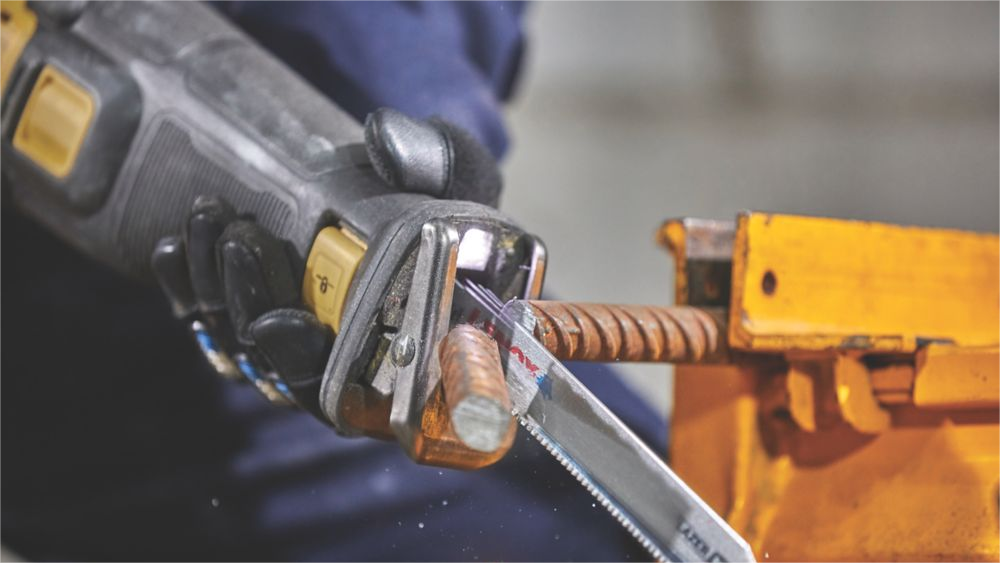
When it comes to selecting the perfect reciprocating saw, navigating through the myriad of options can be a daunting task. Each type of reciprocating saw caters to specific needs, and understanding your requirements is crucial in making the right choice.
Identify Your Cutting Needs
Before delving into the world of reciprocating saws, assess the nature of your cutting tasks. Are you tackling heavy-duty construction projects, precision woodworking, or occasional DIY tasks? Knowing the type of materials you'll be cutting and the level of precision required will guide you in choosing the right tool.
Power Source: Corded vs. Cordless
Corded Reciprocating Saws:
- Ideal for prolonged, heavy-duty use.
- Continuous power supply.
- Suited for tasks in well-connected workshops.
Cordless Reciprocating Saws:
- Maximum mobility and flexibility.
- Suitable for outdoor or remote tasks.
- Limited run time, requires battery recharge.
Consider the accessibility of power outlets and the need for mobility when deciding between corded and cordless options.
Size and Maneuverability
Compact Reciprocating Saws:
- Easy to handle and maneuver.
- Ideal for precision cutting.
- Perfect for tight spaces or overhead tasks.
Consider the physical constraints of your workspace and the level of maneuverability required for your projects.
Blade Action: Orbital vs. Standard
Orbital Reciprocating Saws:
- Faster cutting in various materials.
- Efficient material removal.
- May produce a rougher finish compared to standard saws.
Standard Reciprocating Saws:
- Straight back-and-forth motion.
- Precise cutting in controlled environments.
- Suitable for a smoother finish.
Choose the blade action based on the desired finish and the specific requirements of your cutting tasks.
Power Type: Pneumatic Considerations
Pneumatic Reciprocating Saws:
- Lightweight and easy to handle.
- Suitable for explosive environments.
- Requires access to compressed air.
Consider pneumatic reciprocating saws for specialized environments where electricity may not be the preferred power source.
Budget and Brand Reputation
Evaluate your budget constraints and consider reputable brands known for producing reliable and durable reciprocating saws. Reading reviews and seeking recommendations can provide insights into the performance and longevity of specific models.
Precision in Your Hands
Choosing the right reciprocating saw is about aligning the tool with your specific needs and preferences. By understanding the nuances of different types and considering factors like power source, size, blade action, and budget, you'll be equipped to make a confident decision. With the perfect reciprocating saw in your hands, you'll unlock a world of precision and efficiency in your cutting tasks.
Applications of Reciprocating Saws
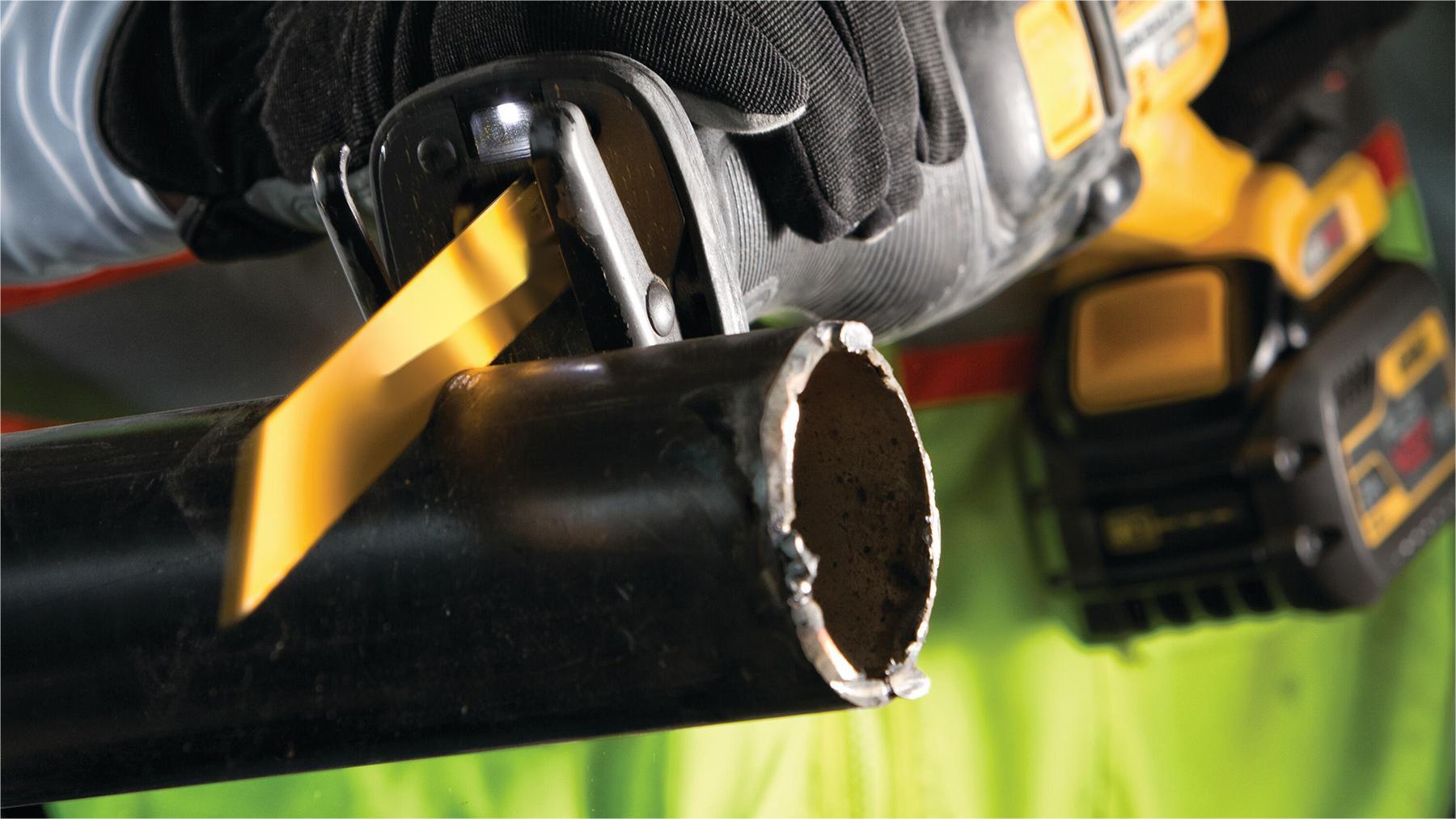
From construction sites to DIY workshops, reciprocating saws prove their worth in diverse cutting scenarios.
Demolition Delight
Reciprocating saws excel in demolition tasks, effortlessly tearing through materials like wood, drywall, and even metal. Their raw cutting power and ability to navigate tight spaces make them ideal for dismantling structures during renovation or construction projects.
Precision Woodworking
For woodworkers seeking precision in their craft, reciprocating saws offer a unique advantage. Whether it's crafting intricate designs or making precise cuts in lumber, the versatility of these saws ensures woodworkers achieve the desired results with ease.
Plumbing Prowess
Navigating plumbing installations can be a challenge, especially when dealing with pipes in confined spaces. Reciprocating saws come to the rescue, allowing plumbers to make accurate and controlled cuts, whether it's PVC, copper, or other pipe materials.
Metalworking Mastery
In the realm of metalworking, reciprocating saws showcase their mettle by swiftly cutting through various metals. From steel pipes to metal sheets, these saws provide the precision and power required for intricate metal fabrication and repairs.
Tree Trimming Triumphs
Landscapers and outdoor enthusiasts appreciate the versatility of reciprocating saws for tree trimming tasks. The ability to tackle branches and limbs with ease, combined with the portability of cordless models, makes them an excellent choice for outdoor cutting applications.
Emergency Rescue
In emergency situations, time is of the essence. Reciprocating saws prove invaluable in rescue operations, allowing first responders to swiftly cut through debris and materials to reach individuals in need. Their portability and cutting efficiency make them a crucial tool in emergency scenarios.
HVAC Installations
Heating, ventilation, and air conditioning (HVAC) professionals rely on reciprocating saws for efficient installations. Whether cutting through ductwork or shaping materials to fit specific spaces, these saws provide the precision and power necessary for HVAC tasks.
Blades and Accessories
The importance of choosing the right blade cannot be overstated. Different blades are designed for specific materials and tasks, such as wood-cutting blades, metal-cutting blades, and demolition blades. Understanding the appropriate blade for your project ensures clean and efficient cuts.
Safety Considerations
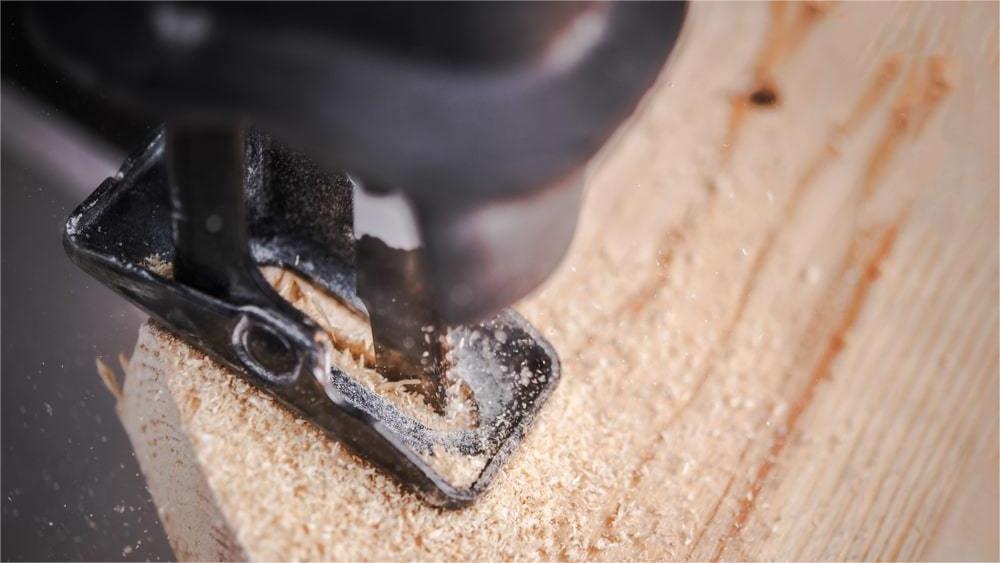
Reciprocating saws are powerful tools that significantly enhance efficiency in various cutting applications. However, as with any tool, prioritizing safety is paramount. Understanding and implementing proper safety measures can prevent accidents and ensure a secure working environment. Let's explore essential safety considerations when operating reciprocating saws.
Personal Protective Equipment (PPE)
Before engaging a reciprocating saw, don the necessary personal protective equipment:
- Safety Glasses: Shield your eyes from debris and potential hazards.
- Ear Protection: Protect your hearing from the high decibel levels generated by the saw.
- Gloves: Ensure a firm grip and protect your hands from vibrations and sharp edges.
- Dust Mask: Guard against inhaling dust and particulate matter during cutting.
Secure Workpiece Positioning
Stabilize the workpiece securely before cutting. This prevents unexpected movements and enhances control over the reciprocating saw. If possible, use clamps or other fixtures to secure the material, ensuring a stable and safe cutting environment.
Proper Blade Selection
Select a blade appropriate for the material you are cutting. Different blades are designed for wood, metal, or other materials. Using the right blade minimizes kickback and enhances cutting efficiency while reducing the risk of accidents.
Inspect the Reciprocating Saw
Before operation, thoroughly inspect the reciprocating saw:
- Check for any damage or defects.
- Ensure the blade is securely and correctly installed.
- Verify that all safety features, such as blade guards, are functional.
Maintain a Firm Grip
Maintain a firm and comfortable grip on the reciprocating saw. This enhances control and reduces the likelihood of accidental slippage. Avoid overreaching, and always keep a balanced stance while operating the tool.
Switch Off and Disconnect
When not in use, switch off the reciprocating saw and disconnect it from the power source. This prevents accidental starts and ensures the safety of both the operator and those in the vicinity.
Mind the Kickback
Be aware of kickback, a sudden and forceful backward movement of the saw. To minimize the risk:
- Keep a secure grip on the saw.
- Position yourself to the side, not in the line of the blade.
Follow Manufacturer's Guidelines
Adhere to the manufacturer's guidelines and instructions provided in the user manual. This includes recommended operating procedures, maintenance schedules, and safety precautions specific to the reciprocating saw model.
Training and Familiarity
Before using a reciprocating saw, ensure that operators are adequately trained and familiar with the tool. Training should cover proper handling, maintenance, and emergency procedures.
Emergency Preparedness
Have an emergency plan in place. Know the location of emergency stops, first aid kits, and emergency exits in case of unforeseen incidents.
Prioritizing safety is non-negotiable when operating reciprocating saws. By following these safety considerations, users can harness the power of these tools with confidence, minimizing risks and ensuring a secure work environment. Always remember: a safe operation is a successful operation.
Maintaining Your Reciprocating Saw
Regular maintenance enhances the longevity and performance of your reciprocating saw. Cleaning debris from the blade and housing, lubricating moving parts, and inspecting the cord (for corded models) are simple yet effective steps to keep your tool in top condition.
DIY Projects with a Reciprocating Saw
For the avid DIYer, the reciprocating saw opens up a world of possibilities. From building furniture to tackling home improvement projects, its versatility allows for creativity and precision in various applications.
Choosing Between Corded and Cordless Reciprocating Saws
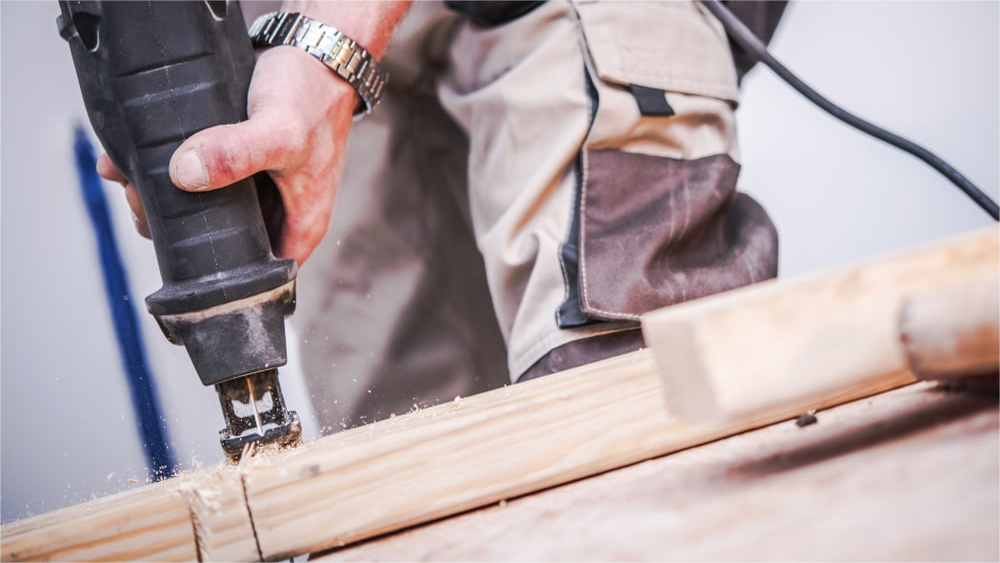
When it comes to reciprocating saws, one of the pivotal decisions you'll face is whether to go corded or cordless. Both options have their merits, and the choice depends on your specific requirements and the nature of your cutting tasks. Let's delve into the key considerations to help you make an informed decision.
Corded Reciprocating Saws: Unleashing Continuous Power
Pros:
Relentless Power: Corded reciprocating saws are plugged into a power source, providing consistent and uninterrupted power. This makes them ideal for prolonged, heavy-duty cutting tasks.
No Battery Constraints: With a corded model, you won't be limited by battery life. This is advantageous for tasks that require sustained power over extended periods.
Professional Performance: Commonly favored on construction sites and workshops, corded saws are known for their professional-grade performance.
Cons:
Limited Mobility: The power cord restricts mobility, making it less convenient for tasks in locations without easy access to power outlets.
Tangled Cords: Managing the power cord can be cumbersome and may pose a tripping hazard if not properly organized.
Cordless Reciprocating Saws: Embracing Mobility and Convenience
Pros:
Maximum Mobility: Cordless reciprocating saws offer unparalleled freedom of movement. With no cords to contend with, they are perfect for tasks in tight spaces or outdoor locations without easy access to power.
Convenient Portability: The absence of a power cord enhances portability, allowing you to move freely without being tethered to an outlet.
Versatile Applications: Cordless models are versatile and suitable for a wide range of cutting tasks, making them popular among DIY enthusiasts.
Cons:
Limited Run Time: The need to recharge batteries may interrupt tasks, especially for extended or continuous use. It's essential to have spare batteries on hand for uninterrupted workflow.
Power Variation: While advancements in battery technology have improved power levels, cordless models may not match the raw power output of their corded counterparts.
Choosing the Right One: Consider Your Cutting Environment
Consideration 1: Mobility Requirements
- If your cutting tasks demand freedom of movement and flexibility, a cordless reciprocating saw is the preferred choice.
Consideration 2: Power and Endurance
- For heavy-duty and prolonged cutting tasks, especially in a workshop or construction setting, a corded reciprocating saw provides consistent power without the need for frequent battery changes.
Consideration 3: Project Types
- Consider the nature of your projects. For occasional DIY tasks and projects with varied locations, a cordless saw may be more practical. If you're primarily working in a fixed location with access to power, a corded saw may be the better fit.
In the corded vs. cordless debate, there's no one-size-fits-all answer. The right choice depends on your specific cutting needs, the nature of your projects, and your mobility requirements. Whether you prioritize continuous power or unrestricted movement, both corded and cordless reciprocating saws offer unique advantages. Evaluate your priorities, weigh the pros and cons, and make a decision that aligns with your cutting preferences and environment.
Conclusion
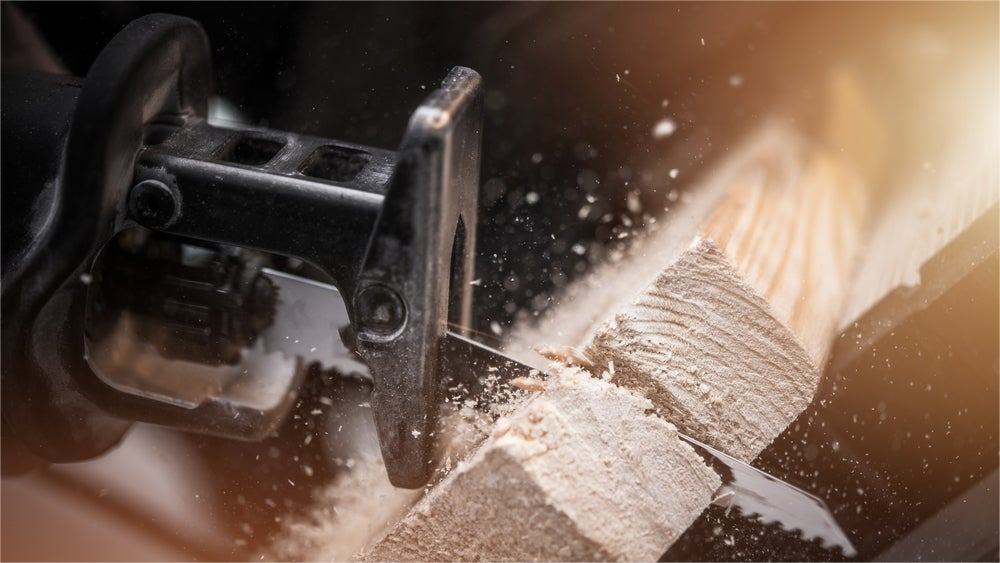
The reciprocating saw is a powerhouse in the world of cutting tools, offering versatility and efficiency in a compact design. Whether you're a professional contractor or a DIY enthusiast, understanding the history, types, applications, and safety considerations of reciprocating saws is crucial. By mastering this tool, you unlock the potential for precise and efficient cutting in various projects.
Post time: Dec-15-2023

